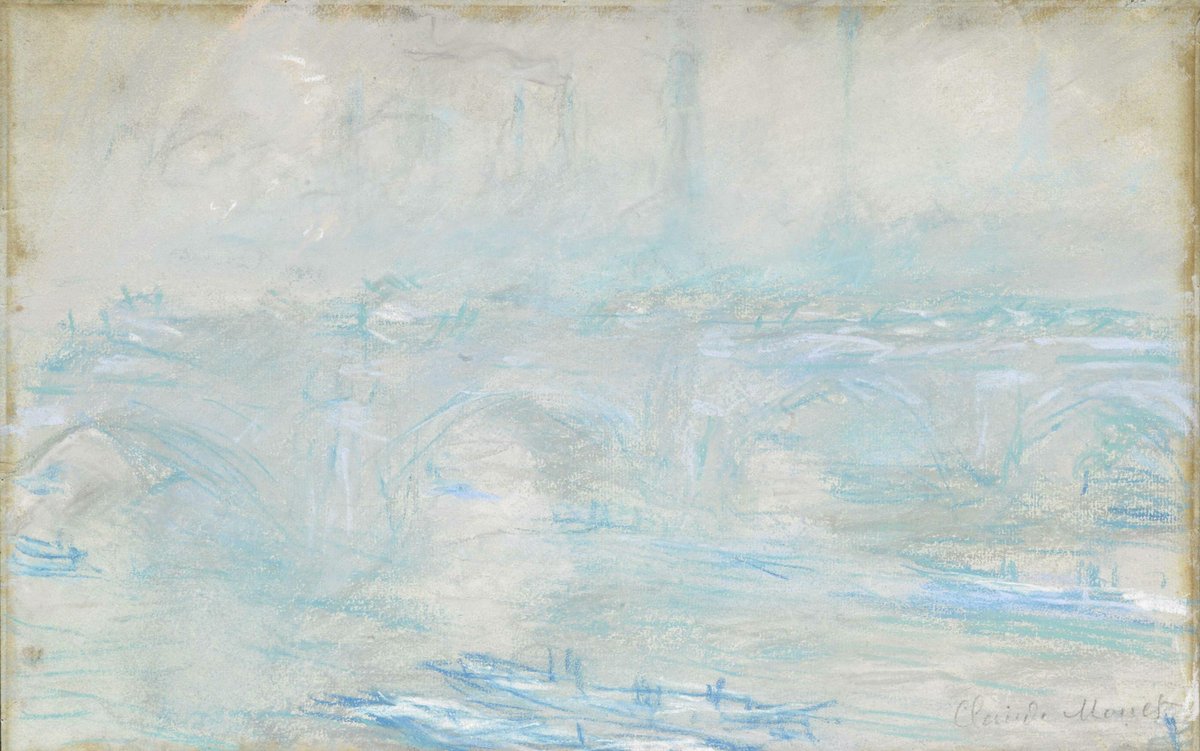Monet – Waterloo Bridge

Claude Monet, Waterloo Bridge, around 1900
Kunst Museum Winterthur, Hahnloser/Jaeggli Stiftung
Foto: Reto Pedrini, Zürich
"Without the fog, London would not be a beautiful city," Claude Monet once said in a letter. It gives the city "its grandiose dimensions".
The artist repeatedly spent several weeks in the British capital between 1899 and 1901, painting various motifs of the city. These works are known today as the London series. Monet was particularly fascinated by the bridges over the Thames and the view of the House of Parliament, which he painted in different weather conditions, often in fog.
While working on this important late group of works, he got up early every day to paint Waterloo Bridge in the morning and Charing Cross Bridge in the afternoon. He was able to observe both motifs from his room on the fifth floor of the Savoy Hotel.
The work of the Hahnloser/Jaeggli Foundation is painted with pastel chalk and was probably created directly on site, as this technique allows you to work quickly – you don't have to wait for the paint to dry. The situation is different with oil paint, which Monet used for most of his paintings. For this reason, he completed the majority of the London paintings in France, when he was back in his studio in Giverny.
Monet's late work is characterised by the idea of the series. He painted many motifs in dozens of variations, including the façade of Rouen Cathedral and his famous Haystacks – as well as the London bridges.
Monet first came to London in the 1870s. Together with his wife Camille and their baby Jean, he fled Paris, which was occupied during the Franco-Prussian War. The artist's enthusiasm for London had a lasting influence on his work. He was determined to return here later, which he did in 1899. While the various weather situations and above all the London fog – which today is thought to be the smog of industrialisation – were of particular interest to the Impressionist, he was probably also fascinated by English painters such as Whistler and Turner.


